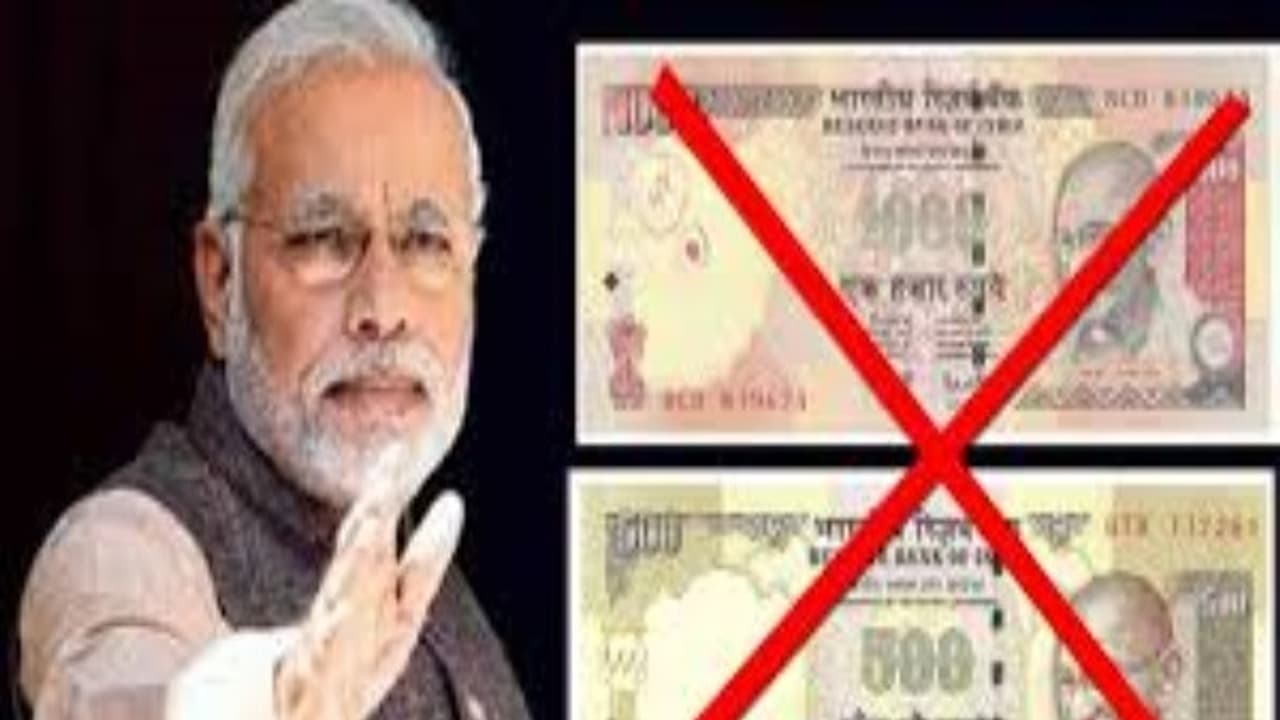More taxpayers, a steadily growing GDP, a larger digital economy and better tracking of economic offenders and cash frauds are some of the positive results from the demonetisation of November 8, 2016. Details follow
New Delhi: Two years ago, the demonetisation or notebandi came as a rude shock to the common man. This was also something unpredictable for economist, who viewed this a high-risk gamble.
Highly criticised till date, Prime Minister Narendra Modi aimed at bringing the economy on a formal platform. India had demonetised notes in the past too, but that was a minuscule compared to what Modi had planned.
Sources in the government said Modi had launched demonetisation with three core objectives: tracking black money and bringing it back, killing fake currency and putting an end to cash-based corruption.
On Thursday, Finance minister Arun Jaitley in his blog said the November 2016 demonetisation was a key step in a chain of decisions taken to formalise the economy, which had increased the number of taxpayers and made evasion more difficult.
He said the government aimed at digitisation, financial inclusion and leak-proof direct transfer of state benefits to citizens were also part of the key measures taken and has been successful in achieving its goals.
Here are a few points on demonetisation
More tax payers
The Economic Survey 2018 stated that the total number of new taxpayers in the 13 months since demonetisation (November 2016 – November 2017) compared with previous 13-month time windows increased by 1.01 crore filers compared with an average of 62 lakh in the preceding six years.
Data by CBDT on direct taxes show a tremendous improvement in tax compliance and the direct result of demonetisation.
> Number of Returns Filed– Increase of more than 80%. 3.79 crores in FY 2013-14 (base year) to 6.86 crore in FY 2017-18.
> Number of Tax Payers– Increased by 40% from 5.27 crores in FY 2013-14 to 7.41 crores in FY 2017-18.
GDP growth with demonetisation
The direct tax to GDP ratio has shown an increase, especially if we consider buoyancy factors, which shows the correlation of tax collection and GDP uptick. According to the finance ministry, highest increase in the buoyancy factor is seen in the personal income tax collections. From tax to GDP Ratio of 5.47% and personal income tax buoyancy factor (PIBF) 0.80 in FY 2015-16 our country has an achieved a Tax to GDP ratio of 5.98% and a PIBF of 2.20 in FY 2017-18.
The May 2017 status report of Clean Money Operation of the income-tax department says that 17.73 lakh citizens amounting to 3.68 Lakh crore were searched and undisclosed income of over Rs16,000 crore admitted.
Finance ministry data says that by FY18, 2.26 lakh shell companies have been de-registered and 4.25 lakh directors are under scrutiny.
Cashless economy
According to RBI data, there is no denying that digital infrastructure has grown since demonetisation with the number of Point of Sale (PoS) terminals increasing by 24% from 2.53 million in 2016-17 to 3.08 million in 2017-18. In the first year (FY16 to FY17), the total number of credit and debit cards grew by almost 29%. But card growth fell sharply in FY18, growing at 1.5 percent, with total physical cards in the country standing at almost 900 million.
It later picked up again in the first quarter of 2018-19. As of August 2018, there were a total of 1.02 billion credit and debit cards in the country.

Use of physical cards
RBI says credit and debit card transactions on PoS devices doubled between FY16 and FY17. The total number of card transactions in the country stood at 5.4 billion in FY17, up from 2.7 billion transactions in FY16.
This means that more people made purchases using their cards.In FY18, however, this growth rate slowed down. 
Mobile banking
The RBI also said the share of paper-based clearing instruments reduced from 11.1% in 2016-17 to 7.4% in 2017-18, showing a strong trend in favour of digital payments. Mobile banking transactions rose both in volume and value terms. In fact, the rise in value terms was faster. Mobile banking includes banking apps, Unstructured Supplementary Service Data (USSD) service or text messages. The value of mobile banking transactions, too, shot up from Rs 2,700 crore in September 2015 to Rs 104,300 crore in 2016, and to Rs 186,200 crore in 2017.

Demonetisation may bring in some bad memories of long queues outside ATM and banks and slowed economy But it opened the trend of increased use of alternative channels in banking, which is still going strong.
SBI has also reported a 502 bps increase in the share of alternative channels at 83.47% as on September 2018 against 78.45% in the year-ago period. In individual segments, internet banking has shown faster growth.
